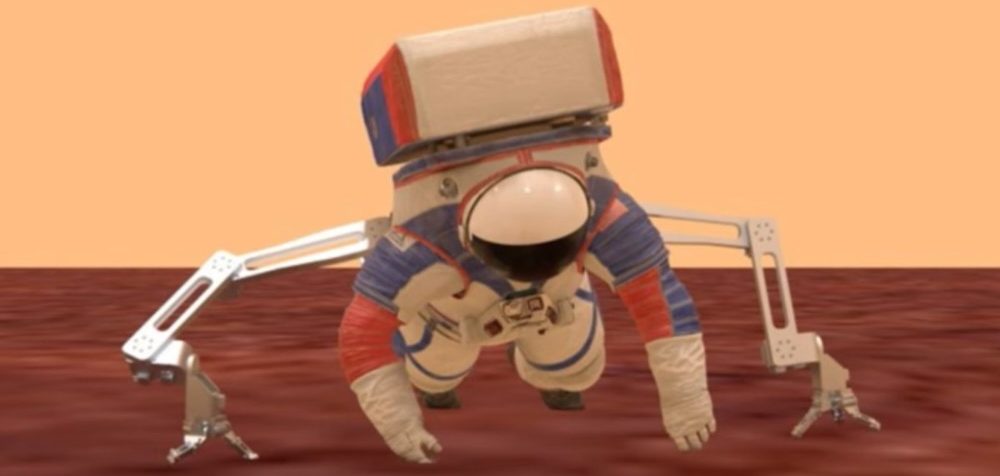
The SuperLimbs project at MIT aims to improve astronaut mobility on the moon with robotic limbs that will help them stand after falls. This is the latest application of SuperLimbs, which were first developed about a decade ago, and are currently used to assist workers in aircraft manufacturing, construction, and shipbuilding.
“Astronauts are physically very capable, but they can struggle on the moon, where gravity is one-sixth that of Earth’s but their inertia is still the same. Furthermore, wearing a spacesuit is a significant burden and can constrict their movements,” says Harry Asada, a professor of mechanical engineering at MIT. “We want to provide a safe way for astronauts to get back on their feet if they fall.”
Asada’s team are designing a pair of wearable robotic limbs that can physically support an astronaut and lift them back on their feet after a fall. The system – called Supernumerary Robotic Limbs or “SuperLimbs” – is designed to extend from a backpack, which would also carry the astronaut’s life support system, along with the controller and motors to power the limbs.
The team tested a physical prototype on healthy subjects who also wore constrictive garments similar to an astronaut’s spacesuit during the studies. It was found that the volunteers used less effort when assisted by SuperLimbs – compared to when they had to recover on their own – when attempting to get up from a sitting or lying position.
The research team expects that SuperLimbs could physically assist astronauts after a fall, which would also help them conserve their energy for other essential tasks. Future plans include constructing a full SuperLimbs system at NASA’s Jet Propulsion Laboratory, streamlining the design and minimizing the weight of its parts and motors using advanced, lightweight materials. The system will then be tested with astronaut suits in low-gravity simulators.
“During the Apollo era, when astronauts would fall, 80% of the time it was when they were doing excavation or some sort of job with a tool,” said team member and MIT doctoral student Erik Ballesteros. “The (upcoming) Artemis missions will really focus on construction and excavation, so the risk of falling is much higher. We think that SuperLimbs can help them recover so they can be more productive, and extend their EVAs.”
